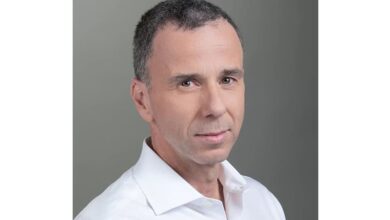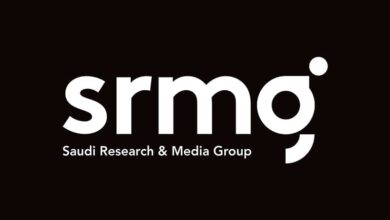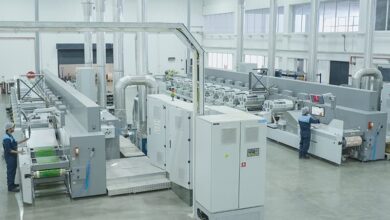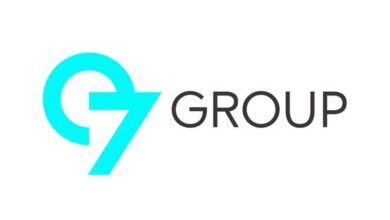Xerox inks first global Brenva HD deal in Egypt
Xerox announced at Drupa 2016 that it was disrupting inkjet by opening up new possibilities for inkjet entry into the transactional, light direct mail and book markets. The Brenva HD production inkjet press was touted as the solution to meet the industry’s demand for a machine that can offer the versatility of a cut-sheet platform and meet the economics of an inkjet press. Copy Express in Cairo, Egypt, became the first print service provider in the world to invest in the Brenva HD, having signed the deal during Drupa and installing it in late 2016.
Ashraf Youssef, director of the graphic communication operation, Xerox Egypt, and Hisham Ibrahim, managing director of Copy Express, talk to ME Printer about the new growth opportunities for both companies made possible by the intersection of inkjet and cut-sheet.
“A cut-sheet inkjet color revolution is imminent in the production digital printing market”
Is Copy Express a new or repeat Xerox customer? What were the factors that led to this deal?
Copy express is not only a repeat Xerox customer but one of Xerox Egypt’s partners. Its partnership with Xerox has spanned for over 30 years, resulting in a long-standing relationship and comprehensive understanding of the Egyptian print and copying market. Both companies share the same values when it comes to professionalism, results, high quality deliverables and innovation. Copy Express utilizes a number of Xerox products. The Brenva Deal comes as a natural result of the trust and long history between both companies.
Could the Xerox iGen have been an alternative option for Copy Express’s requirements?
The Brenva is built on the iGen frame and incorporates the same paper path and feeding system as the iGen but the differences between both are extensive. Brenva utilized a lot of the key features of iGen and incorporates it into the inkjet technology that Xerox acquired from its purchase of Impika in 2013. It includes the innovative cut-sheet technology and captures pages that iGen can’t reach. So, Brenva is technically an upgrade to the iGen. Moreover, Copy express already owns an iGen, thus the Brenva comes to complement the technologies owned by Copy Express leading to a comprehensive printing platform.
It will also support and provide Copy Express with new opportunities and solutions to drive the production of more high-value applications such as direct mail, transactional, books and catalogs and thus supporting them in developing and expanding their offerings.
What does this deal indicate about the growth potential in Egypt for Xerox? What are your growth projections for 2017?
This deal is a testament to the growth potential in Egypt for Xerox and showcases the importance of Egypt’s market to Xerox Corporation. Through this deal, the Egyptian printing industry pioneers in utilizing the first ever Xerox cut-sheet inkjet technology, Brenva HD, through Copy Express.
This is the first Brenva HD deal across Xerox branches around the world. It comes as part of Xerox commitment to provide the latest technologies to the Egyptian market in conjunction to its launch globally. We are targeting a 10% growth in 2017.
Do you now have the lead you wish in Egypt’s cut sheet inkjet market? How big and competitive do you expect this market to become this year?
We believe that with having such innovative cut-sheet inkjet we will be able to meet the increasing need for providing high quality printing while cutting major costs and therefore will help us increase our share in this market.
A cut-sheet inkjet color revolution is imminent in the production digital printing market. The production market worldwide is growing by 5%, and within that, inkjet is growing by 10%. That’s why Xerox developed a complete range of inkjet devices. While the numbers may not be the same in the Egyptian Market, yet we can see the same trend and believe it’s only a matter of time till the cut-sheet inkjet technology takes over a good share of the market production and demand.
“We are increasing our printing capacity to expand our client base in the educational, industrial and commercial sectors”
For what specific markets and applications – transactional documents, direct mail, books, other – did you invest in the Xerox Brenva HD? Is production printing your main business?
Copy Express has been operating in the market for over 30 years, offering a multitude of printing services spanning; digital printing, offset printing, scanning, copying and finishing, with an annual printing volume that exceeds 30 million.Copy Express was established in 1986 by Nasser Othman, with 6 branches across Greater Cairo and operates as one of Xerox Egypt’s key premier partners.
Copy Express invested in Xerox’s Brenva HD to expand its client base and to increase our printing capacity, reaching a number of sectors that include the educational, industrial and commercial sectors, since the Brenva HD focuses more on the production of more high-value applications such as direct mail, transactional, books and catalogs.
What were the specific features of the machine that was required in your company? Why was Xerox chosen over its competitors?
This partnership is not new to us. Copy Express has been Xerox’s partner for around 30 years and we have utilized numerous printers from Xerox, and we were always keen to invest in Xerox’s new technological solutions some of these include: iGen 150, Nuvera 144, DocuColor 135, Color 1000, iGen 3 digital press and Nuvera 288 printers. We have been studying the inkjet cut-sheet technology for over 2 years, and believe that it will provide a number of opportunities to the printing sector in Egypt. Taking our strategy and outlook into consideration, we could not find a better partner than Xerox to utilize our plan and reach our objectives.
The Brenva HD features include maximizing press productivity including the spectrophotometer feature to assist in color calibration, the object-oriented color management feature to help distinguish text from graphics and enhance the quality of the images. As well as the K-Only feature that allows the press to select and print specific-colored jobs that immensely decreases printing costs while preserving their quality. Brenva HD can also take on printing massive documents that can reach up to 364x520mm in size, giving copy express a competitive edge in the Egyptian market, which will all help in offering better quality of printing services to our clients and therefore increasing our client base.
What’s your current or expected monthly print volume which requires investment in the Xerox Brenda HD?
We were able to increase our productivity volume by 1.5 million in only one month after installing the revolutionary Brenva HD. We are targeting to reach up to 3 million pages per month using the Brenva HD, averaging out to 197 pages per minute.
We are also expecting to grow our productivity volume by 18 million papers per year, using Xerox’s Brenva HD, in addition to the company’s current printing volume, which exceeds 30 million.
How does this printer enhance your business? What are your ROI projections?
We believe that the demand for the inkjet market will increase, and that is why we have invested in Xerox’s Brenva HD, which will maximize our production capacity, while cutting significant printing costs and offer printing services of the highest quality. We are very happy to have the Egyptian market take precedence across the world in launching this revolutionary technology through Copy Express.

.gif)



